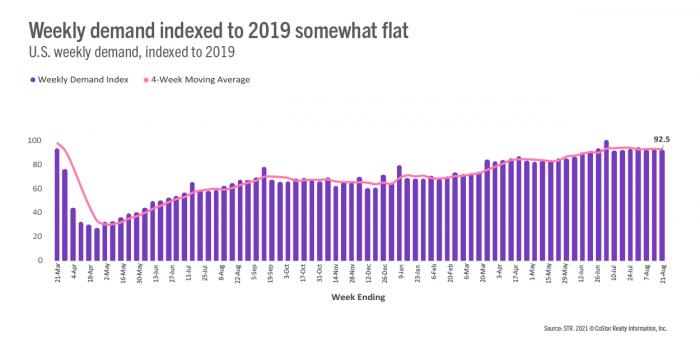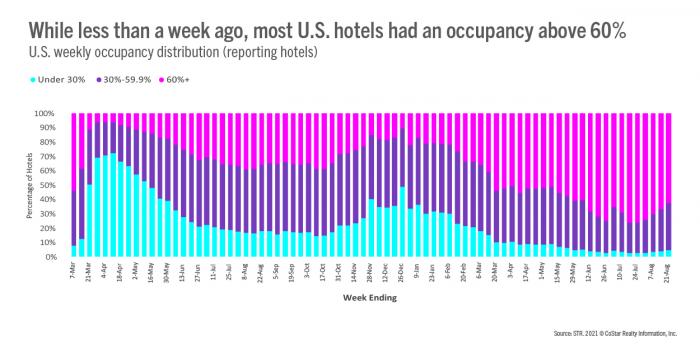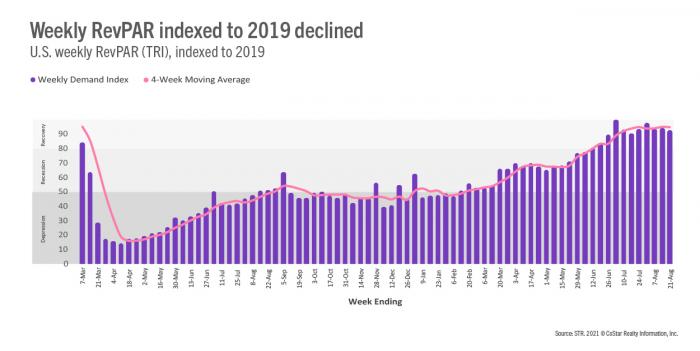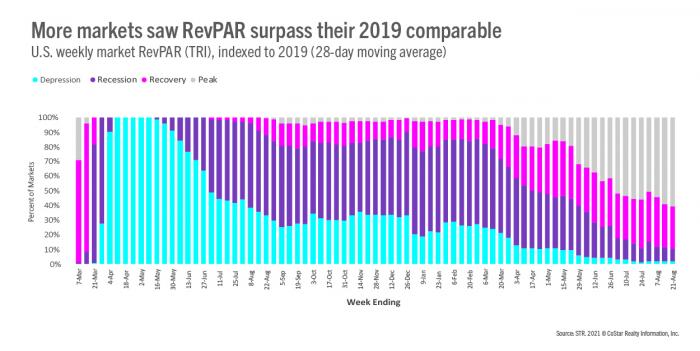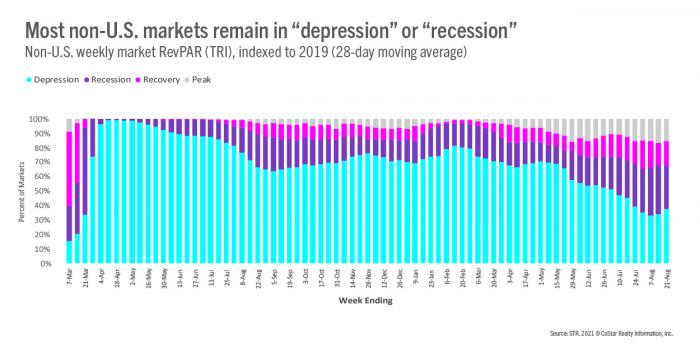With surging COVID-19 infection rates and most schools now back in session, it’s not surprising that U.S. hotel occupancy continued to dip in the latest week of reporting (15-21 August 2021). Occupancy, down to 63.7% in the most recent seven-day period, has fallen by two percentage points or more in each of the past three weeks. On a total-room-inventory basis (TRI), which accounts for temporarily closed hotels, weekly occupancy was 61.3%.
While increased COVID-19 cases are likely affecting demand, most of the loss appears to be seasonal due to the return of in-person schools. Looking back at 2019, from mid-July to mid-August, the U.S. saw demand fall by 2.8 million rooms as schools went back into session. In the same five weeks of 2021, demand fell by 2.9 million room or 125,000 more than 2019. Overall, weekly demand indexed to 2019 was at 92.5, meaning the industry sold slightly more than 92% of the volume of 2019. As compared with five weeks ago, the demand index to 2019 is down 1.1 points.
